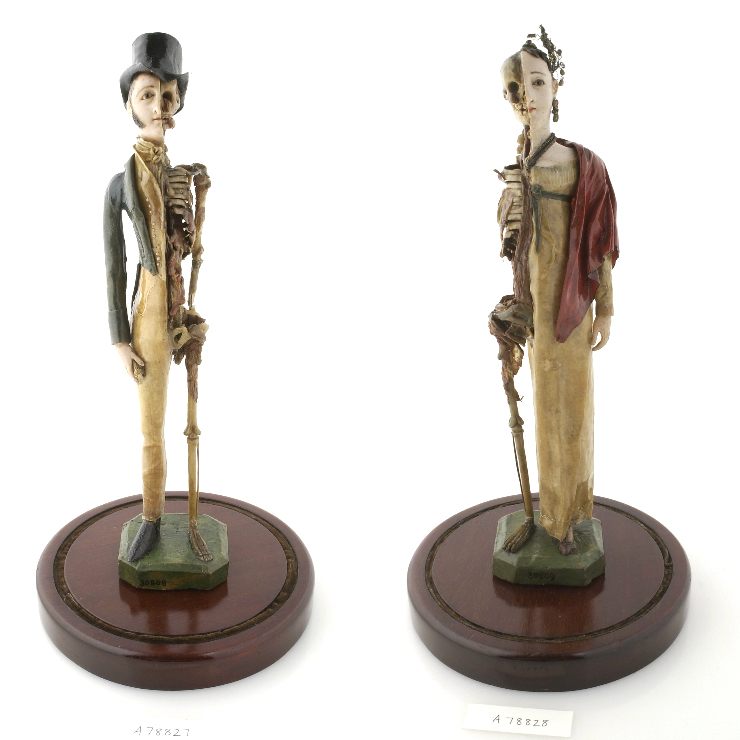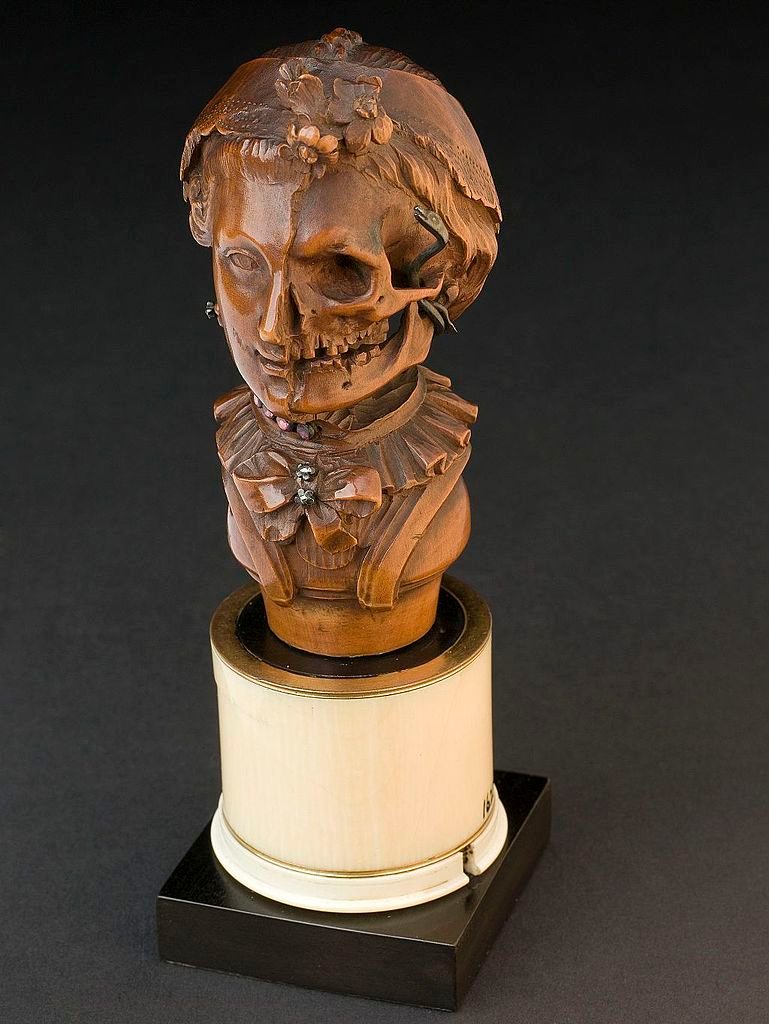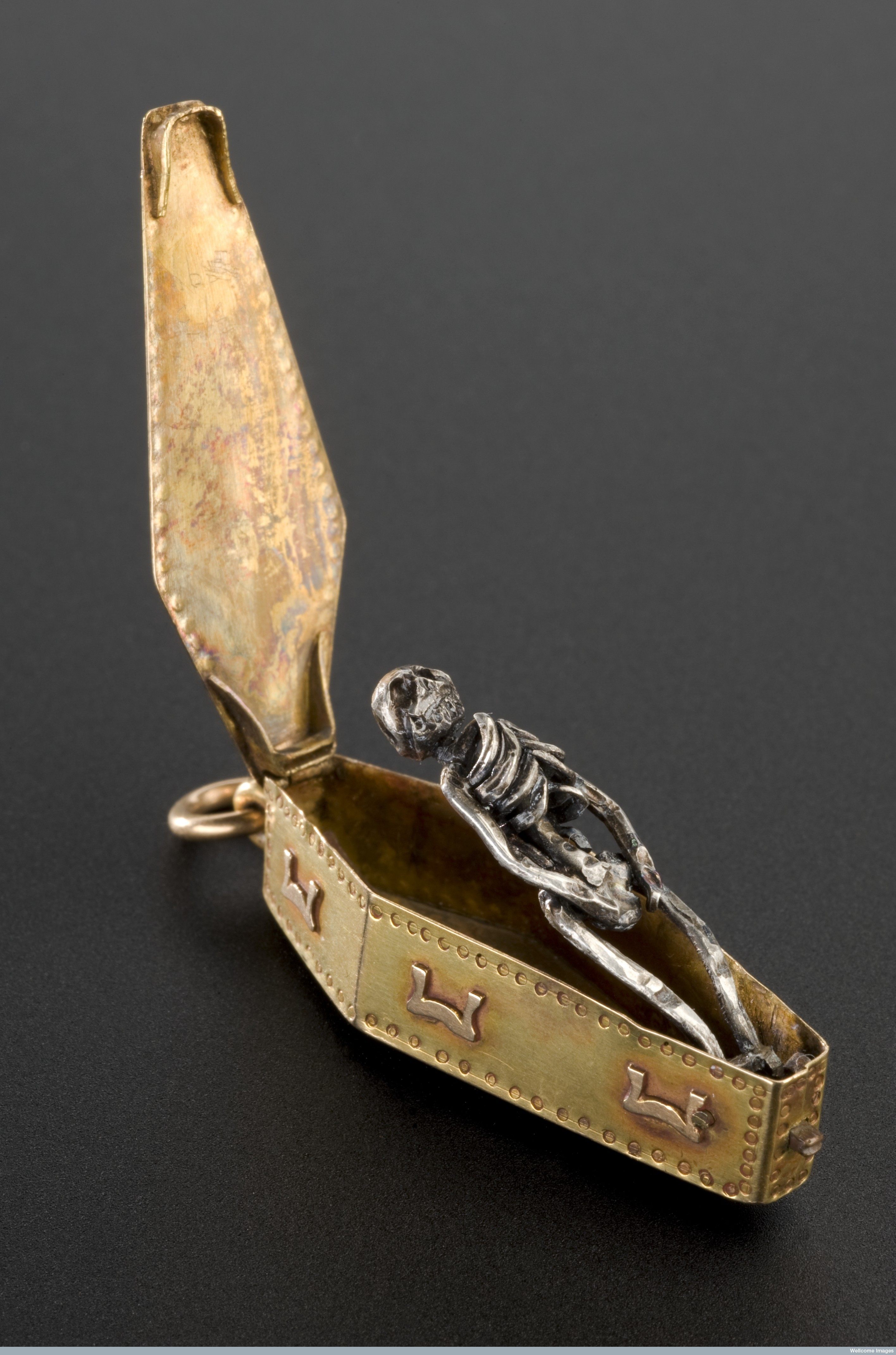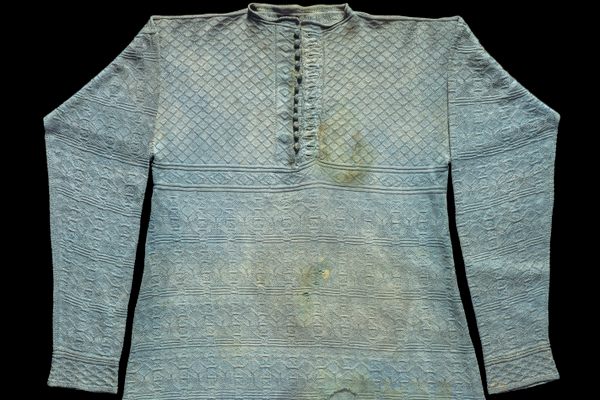In the 16th Century, the Best Office Decor was a Tiny Rotting Corpse
Miniature memento moris were all the rage for around 300 years.

A 16th-century memento mori attributed to Hans Leinberger. (Photo: The Walters Art Museum/Creative Commons)
There are many additions you can make to your office desk in order to remind yourself to stay motivated, seize the day, and make every minute count. A mini zen garden or framed motivational quote, for instance; maybe a page-a-day calendar with a kitten hanging from a branch.
Or a 16th-century statuette of a rotting corpse.
The wooden carving above, sculpted by German artist Hans Leinberger in the 1520s, is a memento mori—a reminder of human mortality designed to keep its owner humble, focused, and untethered to worldly possessions. In 16th-century Europe, these stark odes to humanity’s transience appeared in the form of tomb effigies, full-sized statues, and smaller sculptures perfect for a tabletop.
The predominant image of these artworks was that of the upright corpse, depicted with a torn flesh suit and exposed ribs. The figure sometimes held an object; the corpse in Leinberger’s sculpture clutches a scroll with a Latin inscription that translates to “I am what you will be. I was what you are. For every man is this so.”
One of the more striking full-sized memento moris of the era is the statue of René de Chalon, a French prince who died at 25 in the 1544 siege of Saint-Dizier. Known as a transi—for its depiction of human transience—the sculpture shows the prince’s desiccated corpse holding his own heart aloft.

The transi of René de Chalon. (Photo: H. Zell/CC BY-SA 3.0)
Post-Renaissance, portable memento moris continued to be sculpted, with half-human, half-skeleton figures offering a slightly less gruesome way to remember one’s mortality. The half-half statuettes below were created in the early 19th century to encourage “spiritual contemplation.”

Memento mori figures from the early 19th century. (Photo: Wellcome Library/CC BY 4.0)
The wooden carving below, which was created in 19th-century Italy, shows a woman’s head with half her skull exposed. Note the baby snake wrapped around her mandible. Note also that despite the facial decay, her ruffled collar and lace cap are perfectly intact.

A 19th-century Italian memento mori. (Photo: Wellcome Library, London/CC BY 4.0)
Those preferring a more subtle, easily concealable reminder of death—one that can be whipped out for contemplation during a train ride, then stashed in a pocket on disembarking—could opt for a pendant-style memento mori like the one below. It dates to either the 18th or 19th century.

A teeny skeleton in a mini coffin. (Photo: Wellcome Library, London/CC BY 4.0)
Regardless of their size and level of grisliness, portable memento moris all offered the same message: life is short, you will die, and earthly possessions don’t matter. The fact that this message was contained in an earthly possession is just part of the thrilling paradox that is human existence.
Object of Intrigue is a weekly column in which we investigate the story behind a curious item. Is there an object you want to see covered? Email ella@atlasobscura.com




















Follow us on Twitter to get the latest on the world's hidden wonders.
Like us on Facebook to get the latest on the world's hidden wonders.
Follow us on Twitter Like us on Facebook